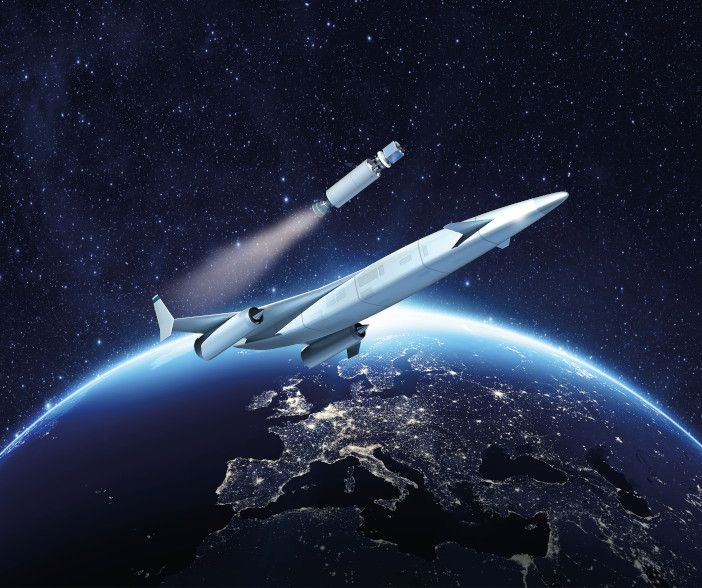Reaction Engines is a company with an ambitious end-goal in mind – to develop its revolutionary rocket engine SABRE. It’s an engine that could be the next leap forward in aerospace propulsion. The design combines technological elements of jet and rocket engines to create a fuel-efficient, reusable and scalable propulsion system.
SABRE (Synergetic Air-Breathing Rocket Engine) is designed to operate in two modes. From take-off to Mach 5, while still within the atmosphere, the engine sucks in air like a conventional jet engine, to support combustion of the hydrogen fuel. Once above the atmosphere, SABRE switches to conventional rocket mode and uses liquid oxygen (LOX) stored on board. The engine’s air-breathing characteristics reduces the amount of heavy LOX a launch vehicle has to carry.
Reaction believes SABRE will enable the introduction of a range of hypersonic air vehicles and the development of satellite launch systems, delivering access to orbit at much lower cost than existing rocket technology.
“It’s no longer a research project,” says Dr Robert Bond, head of future programs at UK-based Reaction Engines. “It’s a development program with an engine in the first stages of demonstration. But like all high technology endeavors there remains a strong research element – in the materials, fluid flow and combustion.”
Reaction Engines can trace its beginnings back to the early 1980s and an ill-fated research program led by British Aerospace and Rolls-Royce to develop a spaceplane called HOTOL (Horizontal Take-Off and Landing). Reaction Engines was launched in 1989, when the HOTOL project ended, with the aim of commercially developing the air-breathing SABRE engine and illustrating its potential with the Skylon single-stage-to-orbit concept.
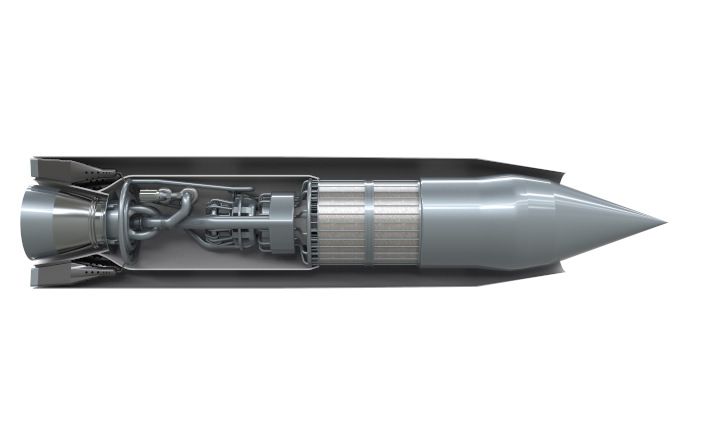
Three decades later, Reaction Engines is making huge strides in its development program. A £26.5m (US$36m) funding injection last year by Boeing, Rolls-Royce and existing investors followed a £20.6m (US$27.4m) investment by BAE Systems. The company has now expanded to 200 employees, built engine and heat exchanger test infrastructure in the UK and the USA, and finalized plans to ground test the core of its SABRE engine.
Systems testing
The SABRE engine has three main parts – the precooler, the engine core and the thrust chamber. These systems are being developed and validated on the ground to reduce flight test time. Reaction Engines’ engineers plan to demonstrate each of the engine’s systems independently, before an integrated ground test of the engine.
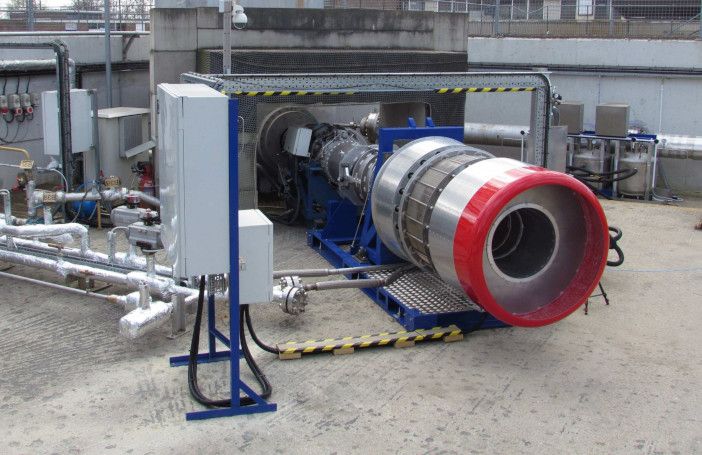
“We’re allowing three to four years to prove the core technologies before integration,” says Bond. “All the work we do from now on has to be done in parallel with a partnership program to integrate the engine further and then onto a vehicle.”
The ground test campaign is beginning with the testing of the engine’s precooler at a high-temperature airflow test facility built by Reaction Engines at Front Range Airport near Watkins, Colorado, this year. The purpose of the precooler is to reduce the temperature of the air going into the engine at high flight speeds, preventing overheating and enabling the air to be used as oxidizer. Small-scale laboratory testing of the precooler was conducted several years ago under cryogenic conditions at the company’s headquarters in Culham, UK, to prove the effectiveness of its frost control system. Crucially the latest test procedures don’t need to reduce the temperature of the air leaving the precooler to sub-zero centigrade temperatures, as the current SABRE engine concept uses a modified thermodynamic cycle.
During the high-temperature tests, the precooler test article (HTX) will be exposed to airflow conditions in excess of 1,000°C (1,832°F), the same as the temperatures expected during high-speed flights of up to Mach 5. The HTX test article was commissioned and shipped to Colorado from Reaction Engines’ site in Culham at the end of last year.
After the HTX testing, Reaction Engines plans to make the Watkins facility available to industry, technology developers and universities that could benefit from the facility’s niche capabilities.
Engine core
The second section of the engine, the core, is the gas turbine and main air-breathing part. Engineers are conducting a preliminary design review of the section and are planning to start the testing of a demonstrator before the end of 2020.
The engine core demonstrator tests will take place at a UK test facility being built at Westcott, Buckinghamshire. The site is a former UK government rocket engine test site and the new facility will consist of a multipurpose propulsion test stand, an assembly building, workshops, offices, a control room and cryogenic hydrogen storage. When complete, Westcott will be the biggest test facility equipped to run tests with liquid hydrogen fuel in the UK. The requirement for hydrogen is a tricky aspect of the test program. Mark Wood, chief operations officer at Reaction Engines, says, “Trying to buy enough hydrogen to test the engine at Westcott is challenging. It’s expensive and we need to use 5-7kg [11-15 lb] a second. We are preparing to use tons of it.”
The Westcott site, which will also host the test programs for other subsystems of the engine, will be made available for use by other companies and organizations for testing, as with the site in Colorado. “We anticipate there will be plenty of opportunity for people to use the facilities where relevant,” adds Wood.
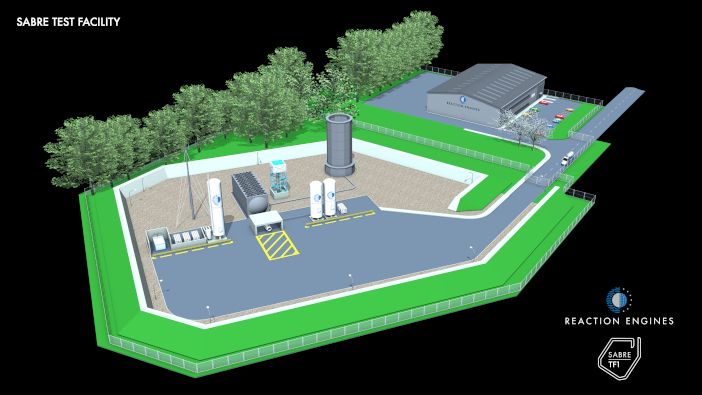
Validation testing
Among the other systems to be tested at Westcott are combustion systems, including SABRE’s thrust chambers and nozzle systems. The design of this part of the engine is also challenging. “We’ve already done some tests on the combustion system and nozzle. It’s a complex nozzle system because it has to operate in air-breathing and rocket modes, so we’ve considered several designs,” says Bond. “Most testing has been around the fluid dynamics and flow. We’ve done modeling that shows the performance. The tests will validate the models for confidence.”
Conventional rockets are designed to exit the atmosphere as soon as they can, because air creates drag. However, a SABRE-based vehicle will stay in the atmosphere for longer, with the wings providing lift, so the engines don’t have to be as powerful. Noise will also be reduced. “It can be a much more effective way of reaching orbit and it’s easier to abort a mission and recover from it if there is a malfunction,” says Bond. “You won’t always lose your payload. It means it no longer has to be ocean or orbit.”
SABRE does still have small LOX tanks because they are required beyond the atmosphere to oxidize the liquid hydrogen fuel the engine uses. Typically 70-75% of the mass of a conventional rocket is liquid oxygen and its tanks. With SABRE, the aim is to harvest the oxygen from the air up to an altitude of 26km (16 miles) and speeds of up to Mach 5 while in air-breathing mode. The LOX will be used for space flight – rocket mode – and speeds of up to Mach 25.

Building its own test facilities is an expensive step for an aerospace company. There are facilities and expertise in Europe that Reaction Engines could use, such as Lampoldshausen in Germany, where the Ariane rocket engines are tested. Wood explains the reasoning behind the move: “We could not find places with the facilities we required and the flexibility around timings we need. We don’t want to have to book time on a stand and then risk missing that window.”
Bond adds, “There are many facilities for conventional aero-engines, but we are more in the experimental end, with prototype development. Having said that, we are looking at certification and we’re talking to the UK CAA.”
Another key goal of the testing is to prove the reliability of the engine. “The reusability of the engine helps drive down costs,” says Woo, “but reliability isn’t typically high for launch vehicles. Large rockets are assembled at or near the launch pad and they fly without a test flight.
“SABRE changes the architecture of a launch to a winged vehicle with an air-breathing engine. You don’t need as much propellant. You can use a smaller, more manageable vehicle that can do horizontal flights and test flights.”
Diversification
There are currently more than 70 launch system projects in development around the world. But not many have the financial backing of top tier aerospace and defense companies such as Boeing and BAE Systems, or the 30-year pedigree of Reaction Engines. Bond sees last year’s successful round of fundraising from investors as a reflection of the progress the company has made recently and of the credibility of the company’s test program.
Bond says, “The major aerospace companies can see we are getting to test some of the key technologies. It makes you seem real and draws people in. When you move from PowerPoint to reality is when the money and interest start to flow.”
The company also believes that elements of the engine’s technology, such as the heat exchanger technology developed for the precooler, could be used to improve the performance of conventional jet engines and could transfer to other sectors such as automotive and energy. Reaction’s management recently set up an applied technologies division and sees achieving such applications as a medium-term goal for the company.
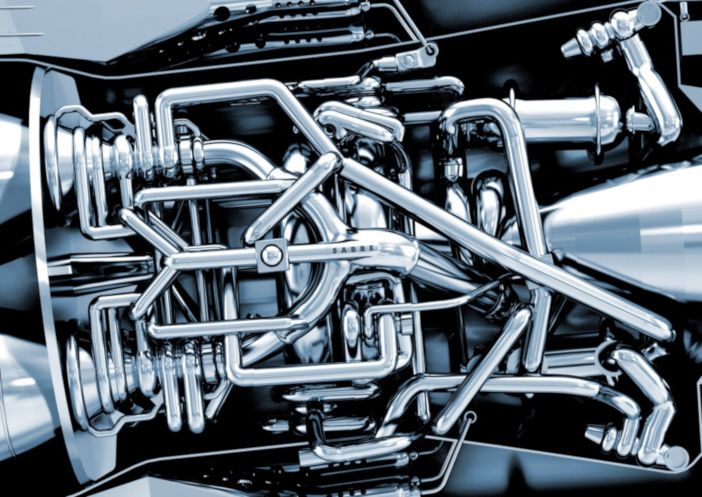
Bond says, “When we were small, we were financially vulnerable. We’re a bigger company now and more resilient, but nevertheless we need to develop an income stream from a variety of sources.”
Developing a technology first, then looking for a solution, is rarely an easy approach to engineering. It is also easy to be transfixed by the promise of cheaper, easier spaceflight and potential applications across different sectors. But as Reaction Engines starts the first ground tests of hardware this year and starts proving reliability, not just learning as it goes along, after 30 years the company is finally moving along the TRL scale – from research to product development.


